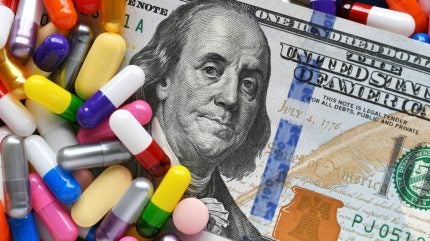
While many pharmaceutical companies have calculated cost hits associated with US tariffs, they are reiterating that looming pharma-specific tariffs create an uncertain financial outlook for the year ahead.
The first-quarter (Q1) earnings season has provided an opportunity for pharmaceutical companies to comment on the financial impact of existing tariffs and offer clues as to how future tariffs could affect 2025 performance.

Discover B2B Marketing That Performs
Combine business intelligence and editorial excellence to reach engaged professionals across 36 leading media platforms.
A common theme among Q1 earnings reports was a 2025 guidance that included the impact of current tariffs whilst excluding any future effects from pharmaceutical sector-specific ones. That instead left executives commenting on the nature of future impacts, as opposed to a material figure.
For those who have released Q1 results, many are already performing above estimates, with executives expressing confidence in their company’s ability to navigate the much-changed trade economy.
Pharmaceutical Technology analysed select Q1 earnings reports and equity research notes from William Blair.
Pharma Q1 2025 roundup so far
Modelling has become as critical as ever for companies this year. BioMarin Pharmaceutical, for example, said that whilst its current guidance does not reflect future pharmaceutical tariffs, it is modelling all scenarios and evaluating potential mitigating tactics.

US Tariffs are shifting - will you react or anticipate?
Don’t let policy changes catch you off guard. Stay proactive with real-time data and expert analysis.
By GlobalDataModerna stated it would incur minimal impact from potential tariffs, with the US big pharma’s drug substance currently produced in the 200,000ft² manufacturing facility in Massachusetts. The company also expects new overseas production facilities to be operational this year, helping regional supplies of its products.
UK-headquartered GSK, meanwhile, said it remains confident in its ability to absorb the impacts of potential pharmaceutical tariffs in the US by increasing operational efficiency, supply chain resilience and further expansion of its US manufacturing footprint.
Expanding production to US manufacturing has been the name of the game for many pharma companies. Roche, for example, outlaid $50bn (SFr41.22bn) in investments for pharmaceuticals and diagnostics in the US over the next five years to counter Trump’s tariffs.
Johnson & Johnson (J&J), which announced its own $55m US manufacturing investment in March 2025, was one of several companies to place a number on tariff costs. It expects a $400m hit tied to existing and newly proposed tariffs, although most of this burden will fall on its medtech division.
Pfizer expects a lower hit than J&J, forecasting costs of around $150m due to existing tariffs this year. Whilst other companies have been quick to double down in the US manufacturing space, CEO Albert Bourla said that uncertainty around Trump’s planned pharmaceutical tariffs is deterring further investment in the country.
MSD’s CEO Rob Davis pointed to $200m in added costs for existing tariffs, mostly via China. The company plans to spend $9bn on US manufacturing and research and development.
Regardless of how pharma companies’ financials look after further tariffs are implemented, effects are still likely to be felt by patients. Analysis by GlobalData indicates that pharmaceutical tariffs could create a pivotal moment in the industry that may reshape consumer access to medicine. How companies deal with tariffs will be a key factor in dictating the prices and availability of drugs in the US in 2025.
GlobalData is the parent company of Pharmaceutical Technology.
Navigate the shifting tariff landscape with real-time data and market-leading analysis.
Request a free demo for GlobalData’s Strategic Intelligence here.





